Tradition of conferment of Doctoral Degrees in Technology
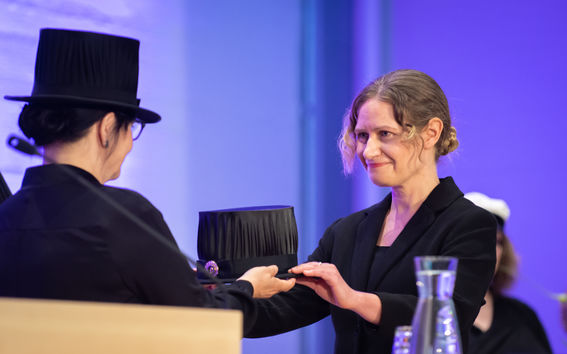
Promovere: to move forward, promote, further
The Finnish word for conferment, promootio, comes from the Latin verb promovere: to promote, to move forward. In the past, a person for instance only obtained the right to speak in universities after a ceremonial conferment. The words master and doctor also have their roots in Latin, both referring to teacher.
800-year old tradition from Central Europe
The conferment tradition goes all the way back to the Middle Ages when universities wanted to celebrate the awarding of academic titles. The Middle Ages in Europe was an era of ceremonies, symbols and estates and the conferment ceremonies of universities were not a unique phenomenon. Other fields had their own celebrations, such as the festive rites with which a journeyman was admitted to a guild after the acceptance of his master work piece.
The first or 'original universities' were founded in Bologna and Paris as early as during the second half of the 12th century and in these, the conferment tradition became established in the 13th century. The first university of Finland, the Royal Academy of Turku, was established as late as in 1640, and it held its first Ceremonial Conferment of Master's Degrees three years after its establishment, in 1643, then conferring doctoral degrees upon 10 new master's degree holders. In the next conferment ceremony, held in 1647, the number of master's rose to 18. The first ceremony to confer doctoral degrees was organised in Turku in 1781. After the Great Fire of Turku, the university transferred to Helsinki where the faculties of philosophy and medicine celebrated their first conferment ceremonies in 1832.
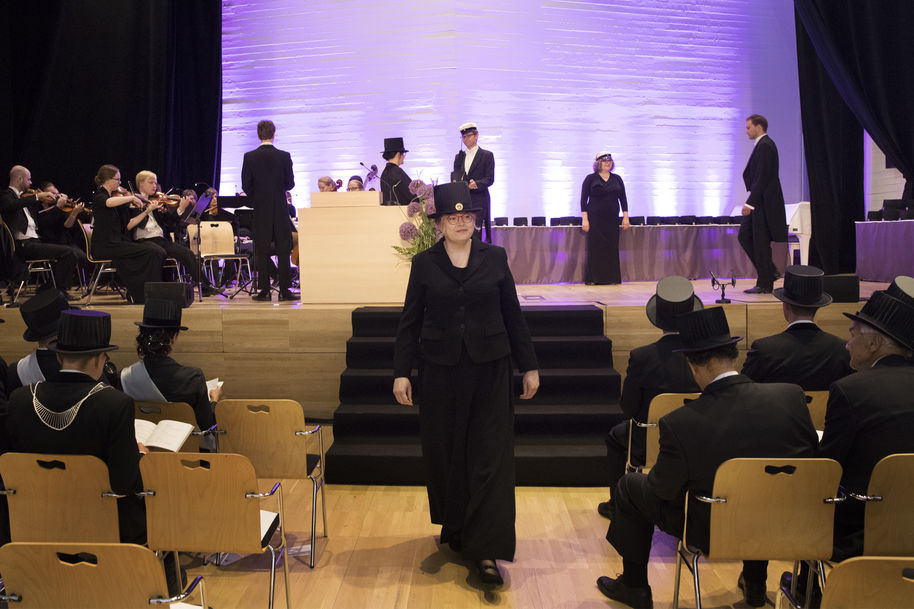
Each university has its own conventions for the ceremonial conferment but the Act of Conferment, Church Service and Ceremonial Banquet have formed the core of the event since the 14th century with the Ceremonial Ball becoming more common towards the end of the 19th century. A formal dress code and speeches have always been part of the traditions of a ceremonial conferment.
The conferment ceremony brings together different time levels: the past, the present and the future. This historical continuum is strengthened by the tradition of inviting doctors and masters who completed their degrees 50 years ago to the ceremonial conferment where they are awarded the title of jubilee master or doctor. At each ceremonial conferment, a number of honorary doctorates are conferred on persons who are eminent scientists or otherwise influential in the fields of culture and society.
Titles of master and doctor and related insignia
In the past, only those who had participated in a conferment ceremony were entitled to use an academic title. Nowadays, anyone who has completed a degree is already a master or a doctor and the conferment ceremony only serves as an official recognition of the earned title. The university faculties are usually responsible for organising their own conferment ceremonies.
In the conferment act, the conferrer of degrees gives new doctors, or the promovendi, and honorary doctors a doctoral hat as an insignia of their title of doctor. As early as in ancient Rome, a hat was a sign of a free and independent man, worn by, for instance, freed slaves and Roman senators. A hat as an academic insignia dates back to the medieval period when it symbolised the virtue of learning and a doctor's freedom to practise scientific study. Originally, the doctoral hat was a beret, but it was replaced by a hat similar to a bourgeois top hat in the 19th century. In some universities, the doctoral insignia include a sword. Masters are garlanded with a laurel wreath as a symbol of their scholarship and new status.
Tradition of conferment uninterrupted in Finland
In Finland, the tradition of conferment has continued uninterrupted throughout the whole university history with each university playing a role in the renewal of the tradition. Elsewhere, this academic tradition has almost disappeared. At the latest, the student radicalism in the 1960s put a stop to formal academic festivities in many European countries. In Finland, also the public examinations of doctoral dissertations are particularly solemn, while in many universities abroad, the public examinations are seminar-like events, and the doctoral diploma is often sent in a rather mundane fashion by mail.
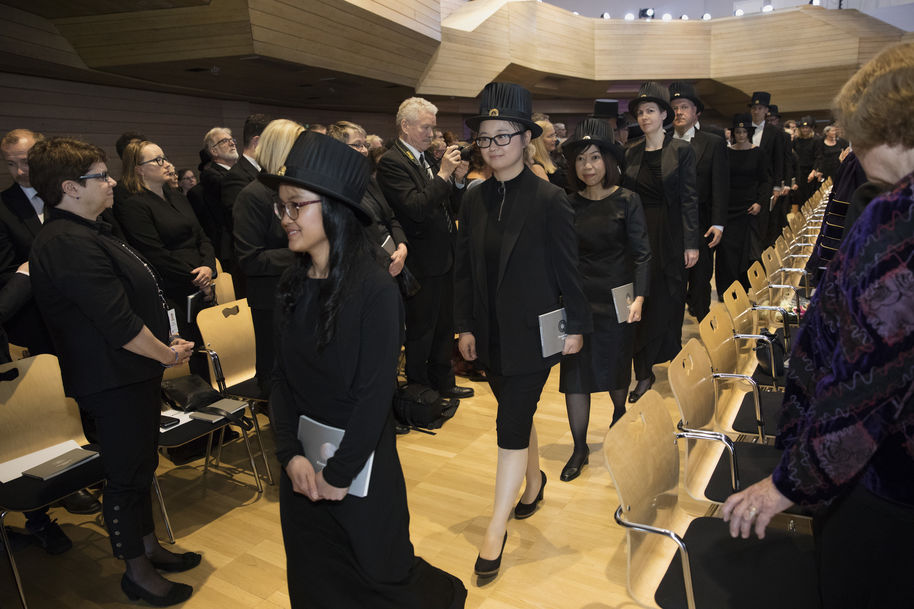
Conferment ceremonies of Doctoral Degrees in Technology at Aalto University
The degree of Doctor of Science in Technology is relatively new compared to the doctorates awarded by traditional science universities.
University status and the right to award doctoral degrees was granted to the Technical University of Finland, later Helsinki University of Technology, in 1908. Its first dissertation was in the field of chemistry, Sulo Hintikka’s ‘Studies on Camphenilone’, supervised by Professor Gustaf Komppa and approved for publication in 1911.
The first conferment in Finland for doctors in technology was held in 1934 in the grand auditorium of the university, by Hietalahti market square. The occasion, a formal evening affair followed by a coffee gathering, was graced by the presence of the President of the Republic and other leading dignitaries of Finland. Ten Doctors of Science in Technology as well as two honorary doctorates were awarded at the ceremony. The doctors honoris causa were Karl Evert Palmén and Eliel Saarinen. The Finnish title for Doctor of Science (Technology), teknologian tohtori, was later changed to tekniikan tohtori.
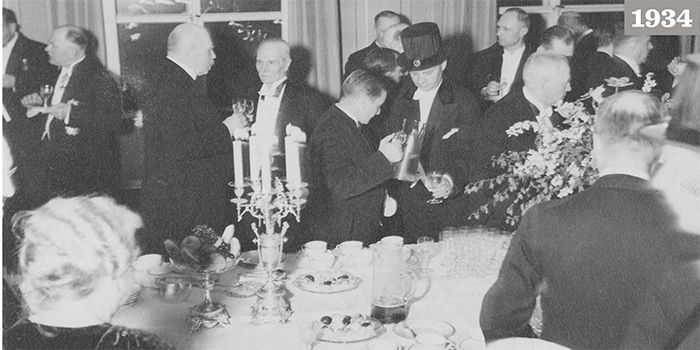
References:
Panu Nykänen, Otaniemen yhdyskunta, Teknillinen korkeakoulu 1942-2008, WSOY, Porvoo 2007.
Promootio akateemisena juhlana, Johanna Ilmakunnas et al. (eds.), Suomalaisen kirjallisuuden seura, Helsinki 2011.
Eeva-Liisa Lehtonen, Pohjoismaiden ensimmäinen kauppatieteiden tohtori Vilho Paavo Nurmilahti, Helsingin kauppakorkeakoulun julkaisuja, B-97, HSE Print 2008.
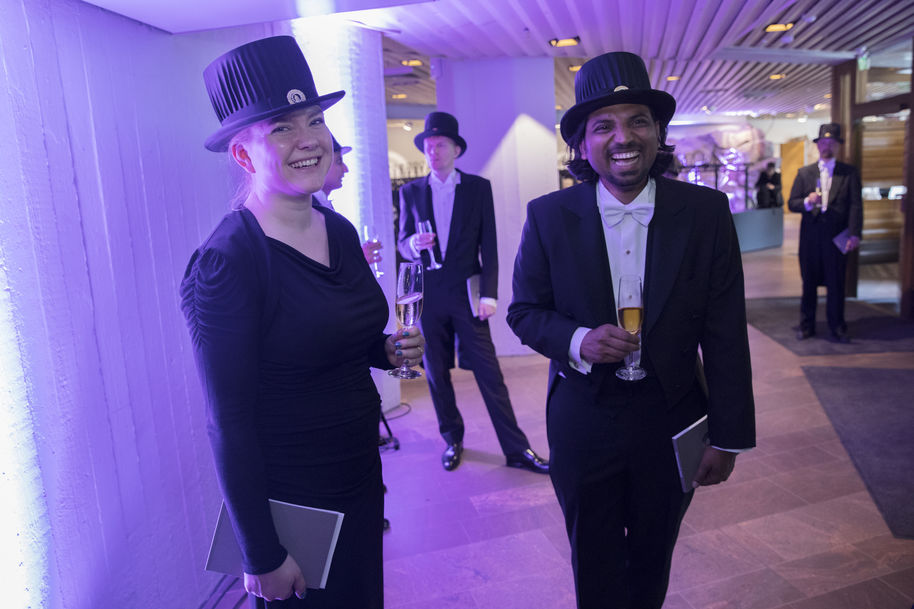
- Published:
- Updated: